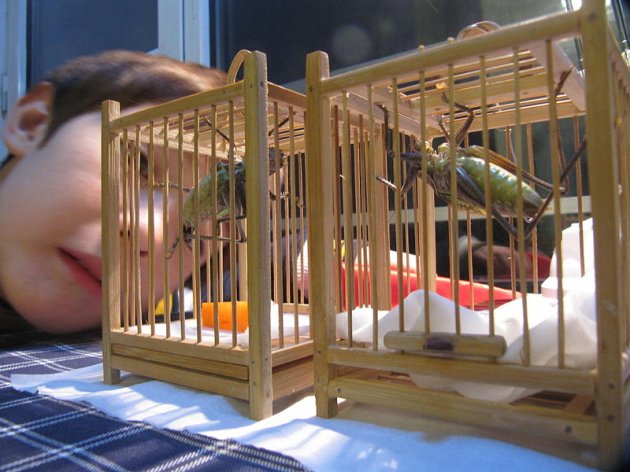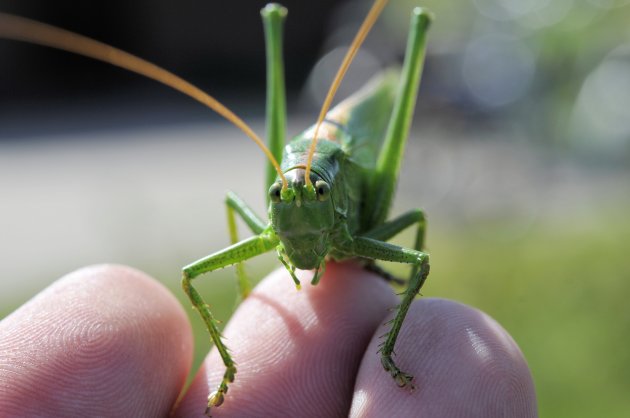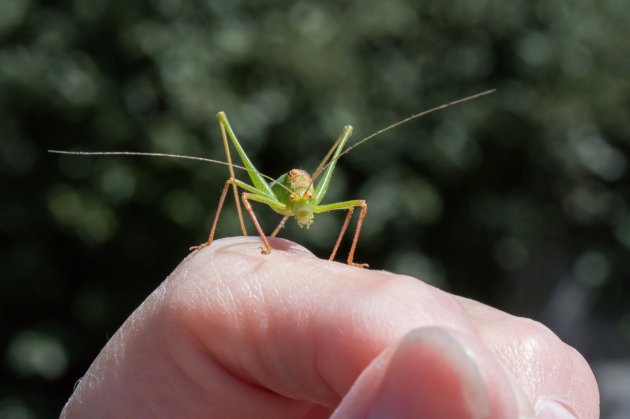When we think of crickets, we may conjure up images of those talking cartoon bugs we love to ooh and ahh over. Or, if you are a reptile-keeper, these may just mean dinner for your favorite lizard.
However, not everyone considers the cricket as a cartoon or a meal. Did you know crickets have been kept as pets in many cultures for thousands of years? Buddhist monks, farmers, and even peasants kept crickets to enjoy their song.
Let's discover the ins-and-outs of keeping a cricket as a pet.
Can You Keep a Cricket as a Pet?
Since cricket-keeping has been going on for thousands of years, the answer to this question is "yes." The better question to ask might be, "does a cricket make a good pet?"
If you are looking for an interactive pet, the cricket may not be for you. Crickets actually stop chirping when someone approaches. We can also probably assume this insect isn't going to appreciate being cuddled, either. In fact, holding this bug may be a challenge since males measure less than one-inch, while females are a tad larger at about 1.5 inches long.
What is the average lifespan of a cricket?
Crickets are black, short, and stubby, and they only jump when they feel threatened. They also have a very short lifespan (up to three months). As far as enjoying the "song" the cricket produces, this trait is only possessed by the male. He does this by rubbing his wings together. Another "con" of keeping a cricket as a pet is if it escapes in your home, you most likely won't find it again.
Pros of Cricket Keeping
There is one unique quality a cricket has over our other "regular" pets; it can "predict" how warm it is.
According to The Old Farmer's Almanac, a scientist, Amos Dolbear, discovered that crickets chirp more rapidly when the temperatures are warmer, so if you hear a cricket, count the number of chirps it makes in 14 seconds, then add 40 to get the approximate temperature in degrees Fahrenheit.
Can your dog do that?

More pros of keeping a cricket as a pet are:
- They are inexpensive to purchase, house, and feed
- They are readily available at pet stores (or nature, if you feel quick enough to catch one).
- They don't bite or sting, so little ones can help feed and clean the enclosure
- Crickets make great pets for classrooms and even kindergarteners.
- They are considered to be good luck in some cultures!
How Do You Take Care of Crickets?
To keep a cricket as a pet, you will first need to create a suitable habitat for it. This could be a plastic container or an aquarium. Be sure to cover the container with wire mesh to prevent your little bug from escaping.
On the bottom of your cricket's habitat you can do a couple of different things;
- Use sand or soil.
- Use a paper towel, with a small container of sand or soil for the female to lay her eggs in. The benefit to this method is the paper towel is easy to replace when it becomes dirty.
Either way, you will also want to provide your crickets with hiding places. Artificial plants, rocks, or an empty toilet paper roll work well for this purpose. If you're going to get really fancy, you can use aquarium decorations.

Feeding Your Pet Cricket
In nature, crickets are opportunistic feeders, meaning, they eat what they find when they are hungry. For a pet cricket, you can offer your new buddy small bits of fresh fruit and veggies, oats, cereal, birdseed, and granola. Crickets also need protein, so offer small bits of cooked meat (be sure to remove after a few hours to prevent spoilage).
You will also want to provide your cricket with fresh water. This can be placed in a water bottle lid or shallow medicine bottle cap.
Keep in mind if you are housing more than one cricket in the same enclosure, if food becomes scarce, they will eat each other, so keep plenty of food available at all times.
Cricket Habitat Temperature
As we learned earlier, crickets like it warm (ideally, around 86 degrees F). To keep your cricket happy and toasty, provide it with a reptile heat lamp, or place a heating pad, or hot water bottle under the enclosure.
Tips on Keeping a Pet Cricket
Crickets need some special considerations to keep them healthy and happy.
- Thoroughly wash all your crickets fruit and veggies to rid it of any pesticides. If you use an insecticide in your home, remove the cricket as airborne toxins can also kill a pet cricket.
- Keep your cricket's environment dry.
- Try to maintain a constant temperature in your cricket's habitat.
- Always remove uneaten food before it becomes dry, moldy, or rotten.
- Crickets can drown in water dishes that are too deep. Always use small, shallow containers for water.
- Be sure to have children wash their hands both before and after handling your pet cricket and the contents of the enclosure.

Fun Cricket Facts
Whether you want to keep a cricket as a pet is up to you. But either way, check out these fun cricket facts!
- Male crickets sing by rubbing their wings together at a 45-degree angle. They use their "song" to attract a female.
- Crickets are nocturnal, meaning they are more active at dusk and night.
- Crickets (like all insects) are cold-blooded.
- Lizards, frogs, and turtles all enjoy eating crickets.
- People also eat crickets. There's even a cricket flour!
- Female crickets can lay up to 200 eggs!
- Females have an ovipositor (a long stick-like protrusion at the end of her abdomen used for laying her eggs in the sand or soil).
- Crickets shed their skin when they grow.
Crickets & You
If you have decided to keep a cricket as a pet, then follow these helpful tips and hints to set up your cricket habitat. Remember to keep your cricket warm, dry, and well fed. Although they do have a very short lifespan, crickets can make a wonderful pet and learning experience for both young and experienced insect keepers.